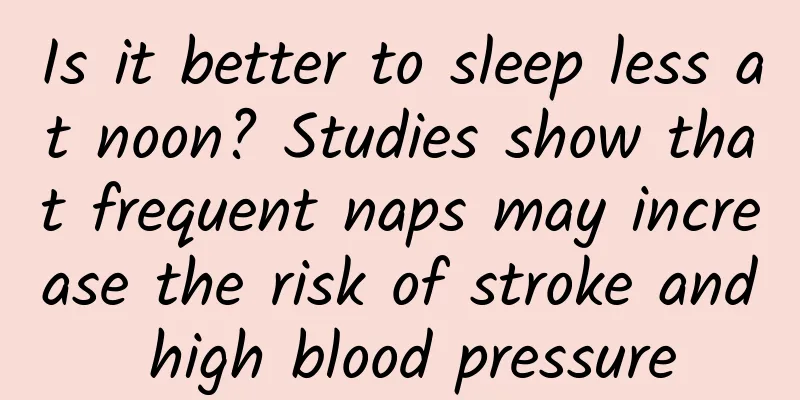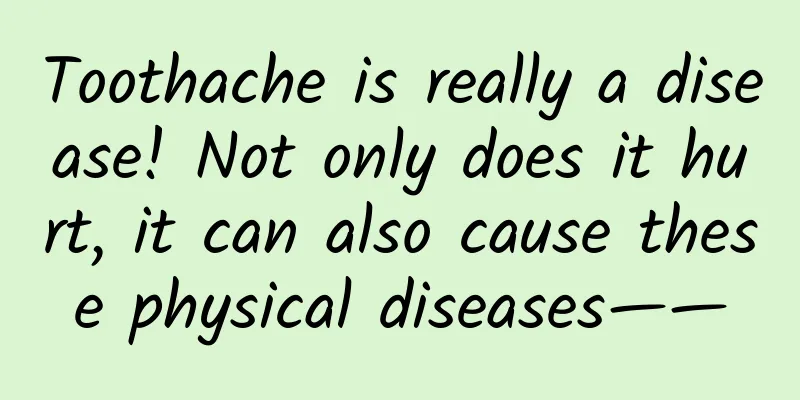Is it better to sleep less at noon? Studies show that frequent naps may increase the risk of stroke and high blood pressure

|
In the hot summer, after a busy morning, office workers often take a nap at noon to recharge their batteries for the afternoon work. But few people know that taking naps frequently can increase the risk of disease. This statement may subvert our traditional cognition. Isn’t taking a nap a good habit? Recently, a new study published in the American Heart Association journal Hypertension showed that napping on a regular basis increases the risk of high blood pressure and stroke. (Source: Hypertension) A research team from Central South University investigated whether frequent napping could be a potential causal risk factor for hypertension or stroke. As far as we know, this is the first study to use both observational analysis and Mendelian randomization. The results showed: 1. Compared with those who never take naps or take naps occasionally, men who take naps frequently are more likely to have lower education and income levels, and are more likely to smoke, drink alcohol on a daily basis, suffer from insomnia, and snore. 2. Compared with those who never take naps, those who take naps frequently are 12% more likely to suffer from high blood pressure and 24% more likely to suffer from stroke. 3. Among participants under the age of 60, those who took naps regularly had a 20% higher risk of developing high blood pressure than those who never took naps. Among participants over the age of 60, those who took naps regularly had a 10% higher risk of developing high blood pressure than those who never took naps. 4. Mendelian randomization results show that if the frequency of naps changes, such as from no naps to occasional naps, or from sometimes naps to regular naps, the risk of hypertension will increase by 40%, and a higher frequency of naps is associated with a genetic predisposition to the risk of hypertension. "These results are particularly interesting because millions of people may like to take naps frequently or even every day during the day," said Professor Wang E, Department of Anesthesiology, Xiangya Hospital, Central South University, corresponding author of the paper. The invisible killer: high blood pressure Hypertension is a chronic disease characterized by persistently high arterial blood pressure. It generally has no symptoms, but long-term hypertension is a major risk factor for coronary artery disease, stroke, heart failure, atrial fibrillation, peripheral arterial obstruction, vision impairment, chronic kidney disease and dementia. Data from the World Health Organization show that an estimated 1.28 billion adults aged 30-79 years suffer from hypertension worldwide, most of whom live in low- and middle-income countries; it is estimated that 46% of adults with hypertension are unaware of their disease; and less than half of those with hypertension (42%) have been diagnosed and treated. (Source: WHO) Currently, the causes of high blood pressure include both non-modifiable risk factors and modifiable risk factors. The former are mainly family history of hypertension, age over 65 years old, and comorbidities such as diabetes or kidney disease; while the latter are unhealthy diet (excessive salt intake, consumption of foods rich in saturated fat and trans fat, low intake of fruits and vegetables), lack of physical activity, smoking, drinking, and being overweight or obese. In addition, high blood pressure is also the main risk factor for stroke. Stroke refers to the death of brain cells caused by cerebral ischemia, which includes two types: one is ischemic stroke caused by blood vessel blockage; the other is hemorrhagic stroke caused by hemorrhage, both of which can cause abnormal brain function. Do you want to take a nap? In this study, data came from the UK Biobank, a large biomedical database and research resource containing anonymized genetic, lifestyle and health information from 500,000 UK participants. UK Biobank recruited more than 500,000 participants, aged 40-69, who lived in the UK between 2006-2010 and regularly provided blood, urine and saliva samples, as well as detailed information about their lifestyle. A small sample of UK Biobank participants was surveyed on nap frequency four times between 2006 and 2019. After excluding people who had previously suffered from stroke or hypertension, approximately 360,000 participants were analyzed for the link between napping and first-reported stroke or hypertension. The average follow-up time was about 11 years, and the participants were divided into three groups according to their self-reported nap frequency: "never/rarely", "sometimes" and "often". About three-quarters of the participants reported taking naps at the same frequency (“never/rarely,” “sometimes,” and “often”) throughout the study. The results showed that people who took naps frequently were 12% more likely to suffer from high blood pressure and 24% more likely to suffer from stroke compared to those who never took naps. Despite this, "nap" does not want to take the blame. The research team said that although napping is not an unhealthy behavior, it may mean that a person's sleep quality at night is poor. According to previous observational studies, for middle-aged people who get enough sleep at night (more than 7 hours), the best effective sleep time for a daily nap is about 15-30 minutes. (Source: Pixabay) It is important to get enough sleep at night. "This may be because, while naps themselves are not harmful, many people may nap because they are not getting enough sleep at night, which is associated with poor health. But naps are not enough to compensate for the negative effects of poor sleep quality at night, " said sleep expert Michael A. Grandner, Ph.D. In future work, the research team will further investigate the link between healthy sleep patterns, including naps, and heart health. Of course, this study also has some limitations. For example, the research team only collected the frequency of daytime naps, not the duration of the naps, so there is no information on how or whether the length of naps may affect blood pressure or stroke risk. Furthermore, nap frequency was self-reported by participants and could not be well quantified without any objective measurement. In addition, the participants of this study were mostly middle-aged and elderly people from Europe, and the results may not be further generalized to other populations. Finally, the research team has not yet discovered the biological mechanism by which daytime napping affects blood pressure regulation or stroke. What do you think about taking a nap? Feel free to leave a comment in the comment section. Reference Links: https://www.ahajournals.org/doi/10.1161/HYPERTENSIONAHA.122.19120 https://newsroom.heart.org/news/study-shows-link-between-frequent-naps-and-high-blood-pressure https://en.wikipedia.org/wiki/Hypertension https://www.xiangya.com.cn/list/2299/63953.html |
<<: Of all the bodhi strings you have worn, none of them came from the bodhi tree.
Recommend
Who is "obstructing" forest carbon storage? It's the microorganisms in the soil!
Popular Science Times (intern Wang Yuke) Forests ...
Traditional color TV companies use the strategy of flooding the market with products to counter the marketing of “single hit product”
"We recently launched a 58-inch product, hop...
Is eating crabs and oranges together like eating arsenic? Here is a guide to debunking the myth about eating crabs!
Will eating crabs and persimmons together cause d...
Architecture design: a design concept for remote call services (an application practice of zookeeper)
Before learning Zookeeper in depth, I would like ...
Paper straws forced me to quit even drinking milk tea. Who among my family members understands me?
What can make young people quit drinking coffee? ...
The most comprehensive guide to event operations!
Event operation is a troublesome thing, so what k...
Build a 20W+ private domain traffic pool from 0 to 1!
According to the "2019 Private Domain E-comm...
8 interesting facts about WeChat, each of which is super useful! A step-by-step guide to help you master WeChat
01Create WeChat group There are more and more fri...
What qualifications are required for Zhuhai’s knowledge payment mini program? What are the features?
WeChat, as the largest traffic portal on mobile t...
What are the functions of the Guangzhou Bottled Water Mini Program? How much does it cost to develop a mini program for delivering bottled water to your door?
Drinking water is an essential part of our daily l...
Live broadcast operation: How to sell goods through live broadcast if you have zero fans?
Recently, many friends have been asking us questi...
How to promote the education industry? Education information flow advertising promotion case!
How can the education industry accurately acquire...
The real reason why the Apple iPad fell out of favor
Recently, Apple's iPad tablet sales have been ...
The most detailed tutorial on how to maintain a Douyin account
Everyone who makes short videos knows about Douyi...
Zhao Wei's weight loss method: What should you pay attention to when performing website SEO optimization?
If someone tells you about Weihai, you may not kn...









